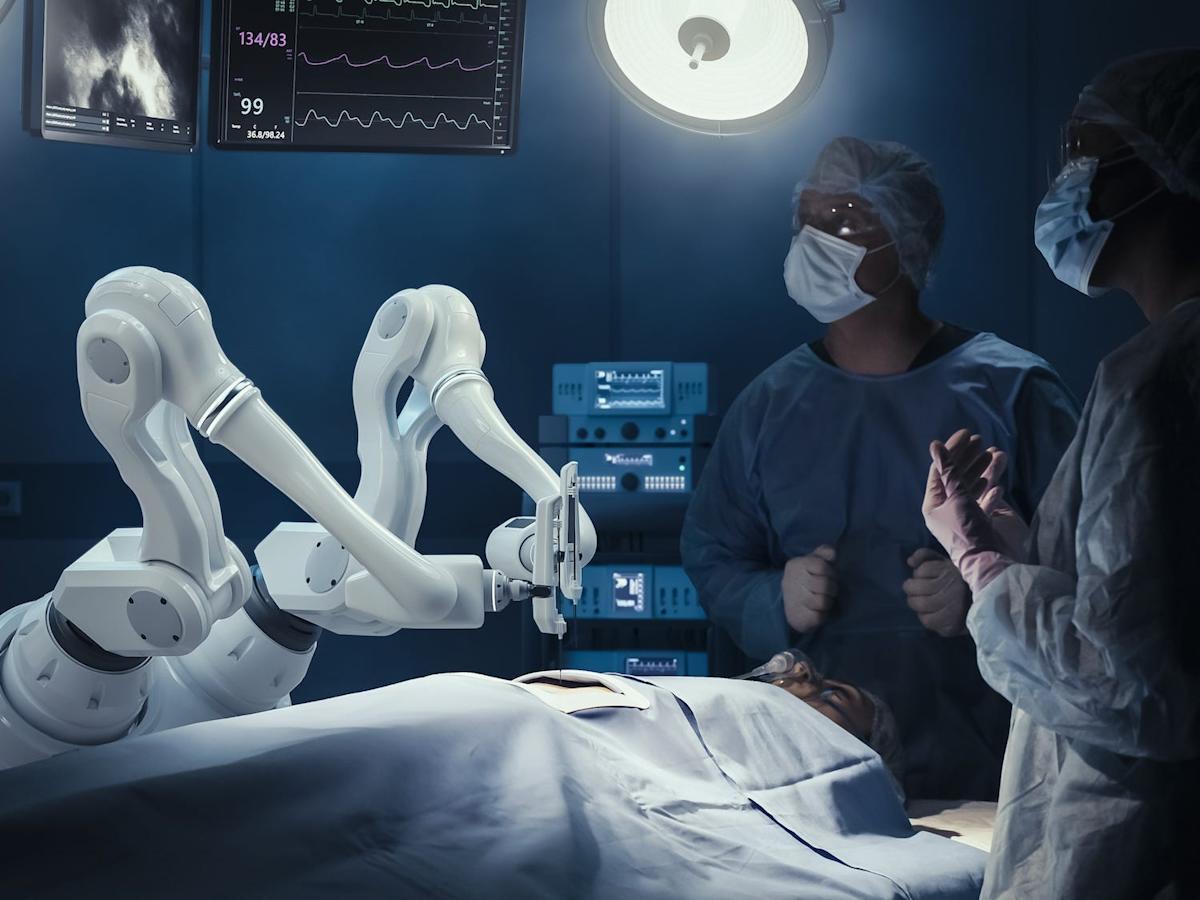Introduction
The endoscopy devices market is experiencing unprecedented growth, driven by advancements in artificial intelligence (AI) and robotics. These cutting-edge technologies are enhancing diagnostic accuracy, procedural efficiency, and patient outcomes in minimally invasive surgeries. As the demand for early disease detection and precision in surgical interventions increases, the integration of AI and robotics in endoscopy devices is revolutionizing the healthcare industry. This article explores the latest market insights, emerging trends, and the transformative impact of AI and robotics on endoscopic procedures.
AI in Endoscopy: Transforming Diagnosis and Decision-Making
The integration of AI-powered algorithms in endoscopy devices has significantly improved image analysis, anomaly detection, and real-time decision-making. AI plays a crucial role in enhancing diagnostic capabilities, particularly in gastrointestinal, pulmonology, and urological endoscopy.
1. AI-Assisted Image Recognition and Disease Detection
AI-driven software analyzes endoscopic images with high precision, identifying polyps, tumors, and ulcers that might be missed by the human eye. Deep learning models, such as computer-aided detection (CADe) and computer-aided diagnosis (CADx), provide real-time insights to physicians, enabling early intervention and improved patient prognosis.
2. Automated Endoscopic Workflow Optimization
AI reduces the manual workload in endoscopy by automating image classification, annotation, and report generation. This streamlines workflow, minimizes errors, and allows healthcare professionals to focus on clinical decision-making and patient care.
3. Personalized Treatment Plans
AI-driven predictive analytics help in tailoring personalized treatment plans based on patient history, risk factors, and real-time endoscopic findings. This improves patient outcomes and enhances clinical efficiency.
Robotics in Endoscopy: Enhancing Precision and Control
Robotic-assisted endoscopy is redefining minimally invasive procedures, providing enhanced maneuverability, stability, and precision. The application of robotics in endoscopy includes robot-assisted surgeries, remote-controlled endoscopic procedures, and automated navigation.
1. Robotic-Assisted Colonoscopy and Gastroscopy
Traditional colonoscopy procedures can be challenging and uncomfortable for patients. Robotic-assisted colonoscopy enhances precision by utilizing self-navigating robotic endoscopes, reducing discomfort and improving procedural success rates.
2. Remote and Telerobotic Endoscopy
With advancements in 5G technology and telemedicine, robotic-assisted endoscopy enables specialists to perform procedures remotely, expanding access to quality healthcare in underserved regions.
3. Complex Surgical Interventions
Robotic-assisted endoscopy enables high-precision surgical techniques such as endoscopic submucosal dissection (ESD) and robotic-assisted laparoscopic procedures. These innovations minimize surgical risks, reduce recovery time, and improve patient outcomes.
Market Trends and Growth Drivers
Several factors are propelling the rapid expansion of AI and robotics in the endoscopy devices market:
-
Rising Demand for Early Disease Detection – AI-driven diagnostics enable early-stage identification of cancers, infections, and chronic diseases, improving treatment success rates.
-
Preference for Minimally Invasive Procedures – Patients and healthcare providers favor non-invasive techniques that reduce hospital stays and post-procedural complications.
-
Technological Advancements in AI and Robotics – Continuous innovation in machine learning, robotics, and image processing is enhancing procedural efficiency.
-
Growing Investments in Healthcare AI – Governments and private organizations are funding AI-powered medical solutions, accelerating market growth.
-
Expanding Applications Beyond Gastroenterology – AI and robotics are being applied in pulmonology, gynecology, neurology, and orthopedic endoscopy, broadening the market scope.
Challenges in AI and Robotic Endoscopy Adoption
Despite its vast potential, the adoption of AI and robotic-assisted endoscopy faces challenges:
-
High Cost of Advanced Technologies – Robotic-assisted and AI-integrated endoscopy devices require significant investment, limiting accessibility to smaller healthcare facilities.
-
Need for Specialized Training – Physicians and endoscopists must undergo extensive training to efficiently use AI-powered and robotic-assisted devices.
-
Regulatory and Ethical Hurdles – Stringent regulatory approvals and compliance are necessary to ensure patient safety and data security.
-
Data Privacy Concerns – AI-driven endoscopic procedures generate vast amounts of patient data, raising concerns about data protection and cybersecurity.
Future Outlook and Market Projections
The future of the endoscopy devices market is deeply intertwined with advancements in AI and robotics. Some key trends expected in the coming years include:
-
AI-Driven Predictive Healthcare – AI-powered analytics will enable predictive diagnostics and disease risk assessment, improving preventive care.
-
Next-Generation Robotic Endoscopes – Future robotic endoscopes will feature autonomous navigation and AI-guided procedures, increasing precision and efficiency.
-
Integration with Augmented Reality (AR) and Virtual Reality (VR) – The use of AR/VR-assisted endoscopic procedures will provide surgeons with enhanced 3D visualization and real-time guidance.
-
Wireless Capsule Endoscopy – AI-enhanced smart capsule endoscopy will offer non-invasive and patient-friendly diagnostic solutions, reducing the need for traditional scopes.
-
Increased Adoption in Emerging Markets – Developing regions will witness higher adoption rates as cost-effective AI and robotic solutions become available.
Conclusion
The endoscopy devices market insights reveal an industry on the brink of transformation, fueled by the integration of AI and robotics. These innovations are revolutionizing diagnostic precision, workflow efficiency, and surgical outcomes, making endoscopic procedures more effective and accessible. While challenges such as cost, training, and regulatory compliance exist, the continuous investment in AI-driven and robotic-assisted solutions ensures a promising future for minimally invasive healthcare. As technological advancements accelerate, AI and robotics will continue to enhance the capabilities of endoscopy devices, paving the way for a new era of precision medicine.







